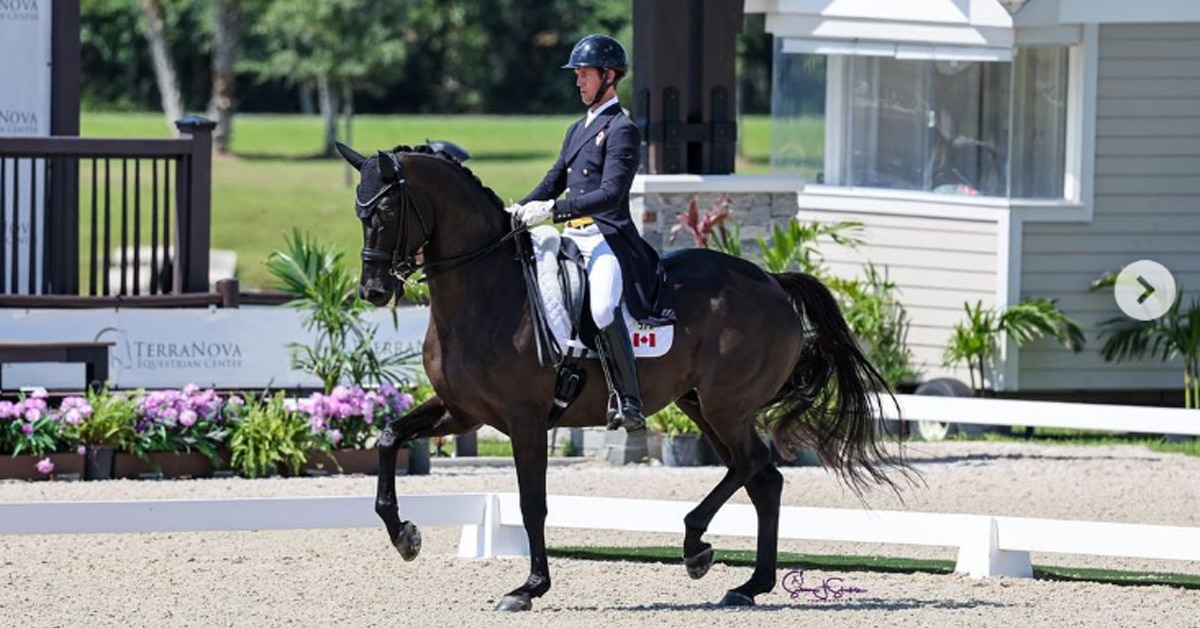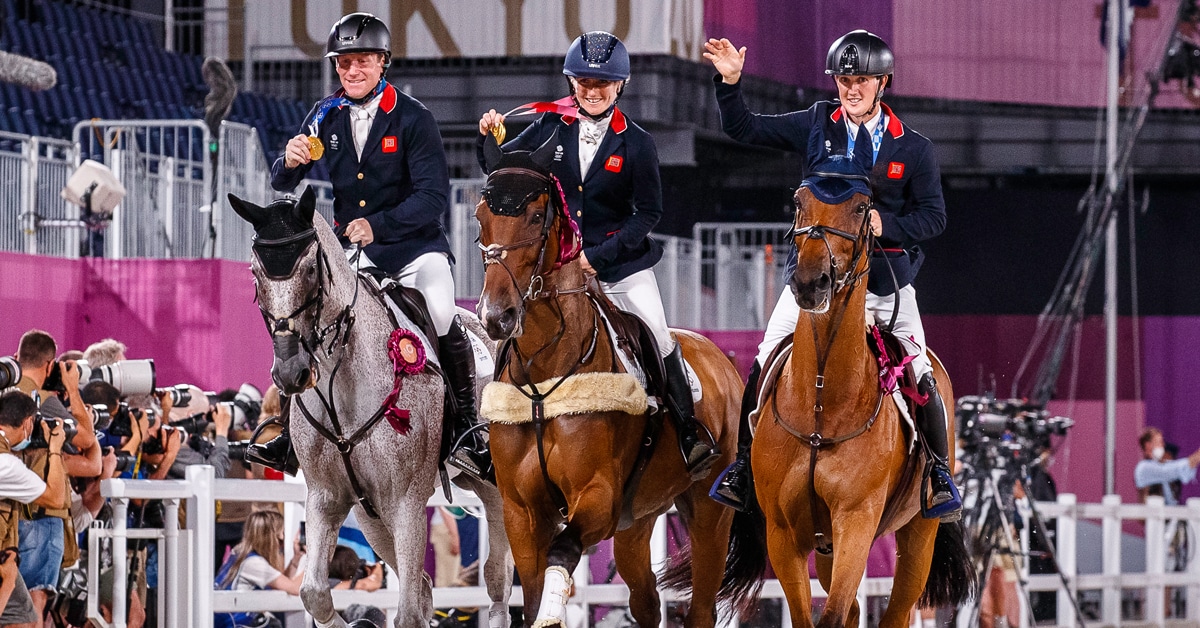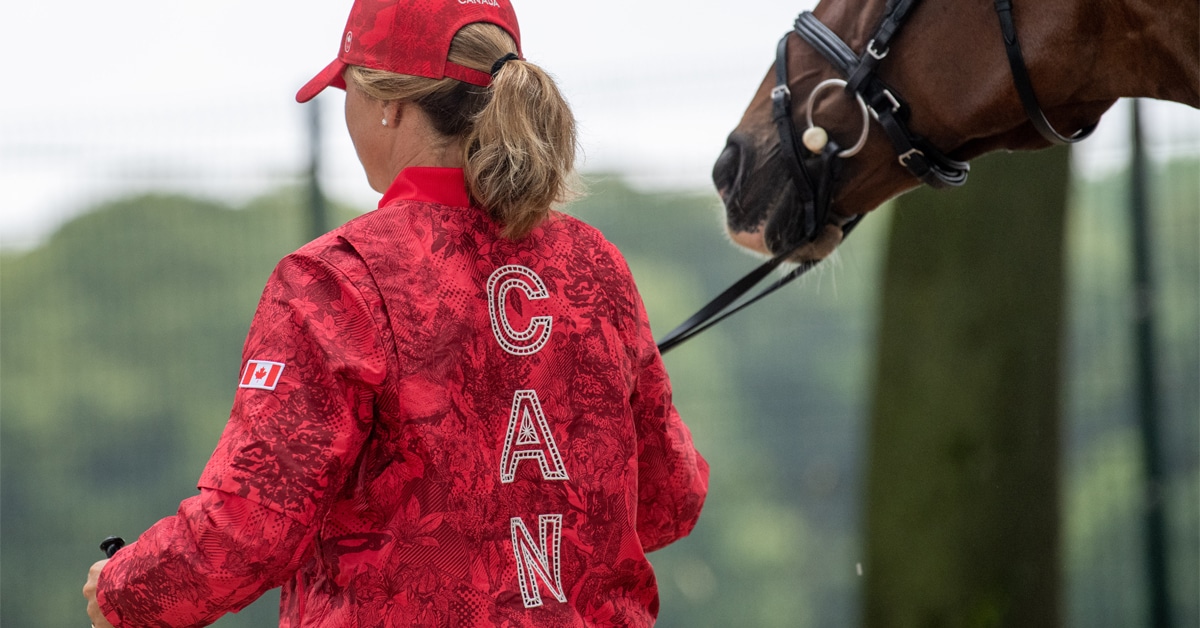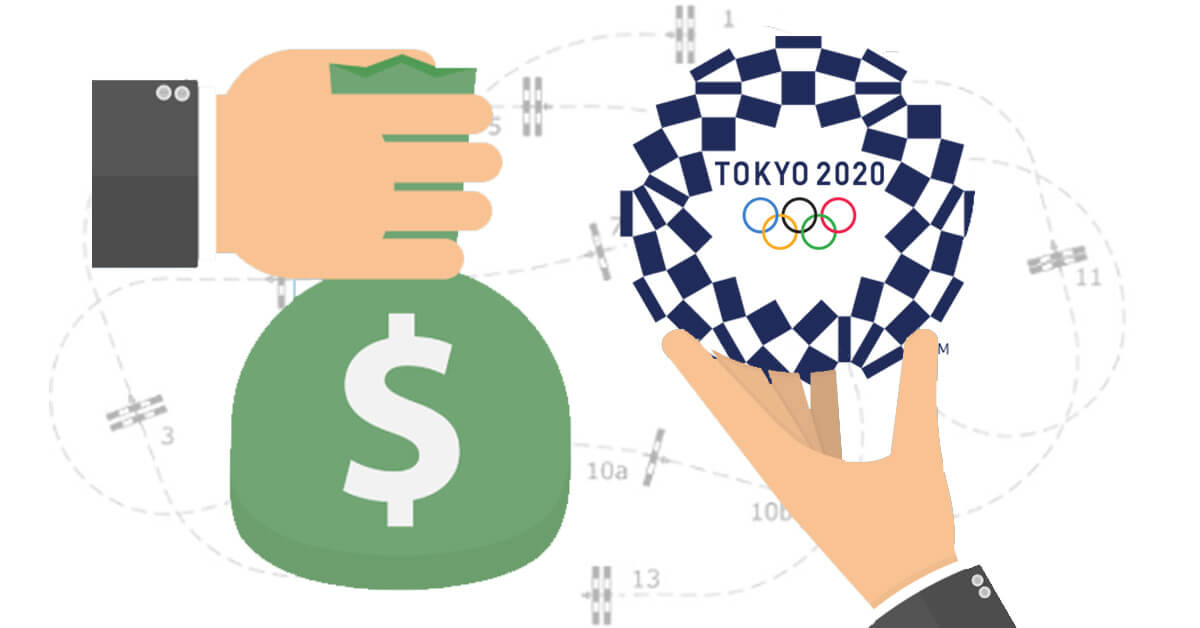The FEI has confirmed it is looking into how Sri Lanka, Syria and Jordan rose suddenly to the top of the Olympic rankings regional tables at late-arranged 2* competitions contested by just a handful of starters.
In the run-up to London 2012 and Rio 2016, there were allegations of ‘pop-up’ fixtures in certain parts of the world staged primarily for the benefit of particular riders, with zero publicity, meaning that rivals did not know about them in time to enter.
But while the FEI has curtailed that practice in dressage and eventing for Tokyo qualifying purposes, similar steps were not taken for show jumping.
The CSIs at the centre of the new controversy are Villeneuve-Loubet in the south of France, where Mathilda Karlsso – Sri Lanka-born but raised in Sweden – won most of the qualifying points for her recently re-adopted birth country; and Damascus, the capital of Syria, where Syria’s leading rider Ahmad Hamcho shot to the top of the points table for his region just before the December 31st deadline. At Damascus, Ibrahim Bisharat took the second available slot for Jordan.
While media in those countries are already celebrating their Tokyo qualifications, the FEI told Horse Sport these places are not yet confirmed, for various reasons (see below.) A spokesman also said the FEI was looking into the shows at Villeneuve and Damascus after receiving questions from undisclosed parties.
Fifteen jumping places are available for individuals at Tokyo, for countries that have not qualified a full team. They are determined by points gained by riders at recognised “Olympic rankings” shows, and there is often a race to the finish on December 31st.
Hong Kong and UAE were displaced at the last-minute, having looked set to top the leaderboard for qualifying Groups G (South East Asia-Oceania) and F (Middle East-Africa) after solid performances throughout 2019, mostly at 3, 4 and 5* shows.
The organisers of Villeneuve and Damascus have broken no FEI rules. Like other tours, they split many days of jumping into different fixtures, to maximise the number of rankings classes permitted per “show.” However, invitees included far-flung nations who arguably would not accept. One of the Damascus shows took place on Christmas Day.
Villeneuve has been running two or three lower-level CSIs a year since 2015, but in 2019, it staged 12, three of them late 2* additions to the calendar in the last two weeks of 2019. Here Mathilda Karlsson registered nine of her 15 counting results for the Olympic ranking. As few as five horses started some classes, with the same small handful of riders including Andrea Herck (Romania), whose family owns the venue.
In previous years, Villeneuve had not capped entries, but its last three December shows invited just eight French and 12 foreign visitors. Many invitations were, unusually, extended to riders in eastern Europe rather than nearer neighbours such as Germany, Britain, Ireland or the Netherlands. According to the published schedules, two extra rankings classes per show were added only after the close of definite entries.
Damascus staged nine 2* shows from October-December open to 100 athletes – 80 from Syria (even though Syria does not have 80 active international riders) and 20 foreign athletes invited from Lebanon, Jordan, Egypt, Russia, Iran, Italy, Bulgaria, Germany, France, Macedonia and Argentina.
Aside from very long journeys, some riders no doubt heeded diplomatic advice to avoid war-torn Syria. In reality there were an average 10 riders per Damascus show, jumping two horses per class.
Seven of Hamcho’s 15 counting results and 13 of Bisharat’s came from these events.
Villeneuve and Damascus staged all these shows at 2* level, which is not bound by the FEI’s current protocol for CSI invitations. That system is replaced on February 4th. Both venues have packed in further fixtures before February 3rd. Some riders at the December shows inevitably showed a marked improvement in their Longines world rankings.
Olympic ranking points are awarded pro-rata to the number of starters and the star-rating, but do not, for instance, take account of the riders’ actual scores. In one class, a rider earned rankings points despite scoring 28 faults.
These anomalies might have gone unnoticed but for an anonymous tip-off to journalists, claiming riders “bought” their Olympic places at these shows. The source alleged that riders from several other Arabic countries had been declined invitations to Damascus.
The source added: “The fact that the FEI has allowed such behavior, equivalent to cheating, and the result of uneven playing ground, should be brought to the attention of not only the FEI but every member of our community.
“All riders work equally hard and fight on equal grounds for the Olympic spots, a dream of every athlete in this world.
“Riders who play by the books should not have to suffer from other parties’ cheating. Otherwise it will be a game of whichever rider has more money goes to the Games. Not only does this take away any justice or sportsmanship but also tarnishes the reputation of this sport as a whole.”
Villeneuve-Loubet, when asked for comment by Horse Sport, invited us to “read the rules.” Show secretary Cristelle Caiulo said only four of the riders who had asked to attend were declined – because they were not from the invited countries. In the Olympic rankings system the FEI acknowledges there could be just five riders in some competitions “so it is not so rare.”
She was happy to talk in general terms about the difficult economics of running CSIs, the debts incurred by other French shows despite their popularity, and the frustrations for organisers when riders habitually enter late; for this reason Villeneue-Loubet prefers to invite reliable people they already know.
Mme Caiulo did, though, repeatedly decline to explain why it was a good idea to request three late additions to the FEI calendar over the Christmas period limited to 20 riders; how shows with a handful of starters and a Euros 75,000 prize fund were economically viable; or why the number of rankings classes trebled only after the close of definite entries.
She said: “I never see nowhere in the FEI rules that OC [organising committee] must give a reason why he limit at 20 or 30 or 50 riders? If you see this obligation in FEI rules please let me know where [ sic].”
There has been a totally different approach in FEI eventing for 2020. Olympic ranking CCIs had to be in the published calendar for 2019 as agreed in 2018. Eventing also ruled that 4* and 5* CCI counting towards the Minimum Eligibility Requirements (MERs) up to June 2020 can only be run at established annual events.
There were controversies about ‘pop-up’ shows in dressage before previous Games, but none this season.
The FEI did not supply direct answers to all of Horse Sport’s questions but sent this statement about the qualifying system:
“The list of individual quotas is not established yet and has not been communicated as NOCs have until 3 February 2020 to confirm their allocated team quota place. If an NOC withdraws its team quota place by this date, or did not confirm its NOC Certificate of Capability as of 31 December 2019, the NOC will be eligible for an individual quota place and this may influence the individual quotas as established through the Olympic rankings.
“The FEI will only communicate by 17 February the list of individual quotas, both the individual slot for each NOC that has withdrawn their team quota place and the allocation of individual quota places based on the Olympic rankings.
“The Olympic Rankings – Jumping is based on the best 15 results per athlete/horse combination. Points are given according to the scale of points depending on the number of starters and level of competitions. For example, if there were between 5 and 9 riders, only 60% of the points are given, and if there are 4 or less then no points are given.
“Athletes obtain Olympic ranking points in FEI Events approved in the FEI Calendar and where Schedules were approved by the FEI. You can view further information on the Jumping qualification scale of points on the FEI website here.
What happened when previous ‘pop-up’ shows were challenged?
In 2011 the FEI’s Equine Community Integrity Unit investigated eight CSIs during 2011 in Baku, Azerbaijan, which were allegedly “manipulated” to favour home riders and enable Jamal Rahimov to head the region’s Olympic Rankings list before London 2012 in which he finished 66th.)
The FEI voided the rankings points at one CSI2*, though on appeal the FEI Tribunal reinstated a 4* where it felt accusations of manipulation had not been substantiated.
At that time, 2* CSIs schedules did not have to be approved by the FEI, just submitted in advance.
Both the FEI and Tribunal said the sudden increase in Baku shows from its usual two per year was “rather odd.” FEI jumping director John Roche did not think it looked suspicious at the time, assuming it was connected to sport development in the region.
The FEI did not object to the large number of CSIs, but to the fact the invitations to other countries were not “genuine,” that schedules were submitted late, and invitations issued so late it was “impossible” for anyone from abroad to respond.
In dressage prior to London 2012, the Dominican Republic protested about a record 13 CDIs in Brazil during 2011 scheduled primarily for Olympic rankings purposes. They were attended by zero foreign nationals and that FEI criteria for foreign judges were breached. Both FEI Tribunal and CAS dismissed these appeals.
Prior to Rio 2016, an appeal was lodged against the judging at Lier CDI, a “pop-up” show in Belgium in 2015. It was sponsored by Ukranian interests, with Russian and Belarussian judges who were alleged to favour a Ukrainian dressage rider. That appeal was upheld and the points voided. In turn the FEI suspended the two judges because of their “partisan” scoring.
More from News:





